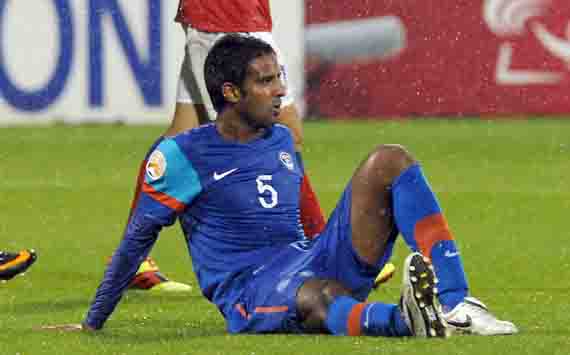
The World Of Soccer
Friday, February 10, 2012
Player Profile: Bobby Charlton

Tuesday, November 29, 2011
Player Profile: Anwar Ali

Anwar Ali
24th September 1984
Country: India
Major Clubs: JCT, Dempo, Mohun Bagan
At 189 cm, Anwar Ali is one of the tallest players in the Indian national football team. From JCT to Dempo, and now to Mohun Bagan, Anwar has steadily moved up the Indian football ladder, and is also a regular for the national team.
Anwar started playing at the Rurka Kalan Academy in Phagwara, which also happens to be his home town. After graduating from the academy, the 26-year old played for some local teams, before featuring for Punjab in the Santosh Trophy in 2004, where his side reached the finals.
Later that year, he went on to join Punjab Police. And it was during his time there that he started playing as a center back as opposed to his previous position of right back. He grew into the role steadily, and it wasn’t long before JCT were aware of his performances, and signed him up. Since then, he’s managed to make his mark on Indian football, and has forged a good career for himself.
The Durand Cup in 2006 was a big tournament for Anwar, and it would be turn out to be the moment when he burst onto the national scene, thanks to some sterling performances. JCT went all the way to the final, and the Phagwara boy put in another great shift in defence, but couldn’t save his side from losing to Dempo.
After his performances at the Durand Cup, he was awarded the tournament’s ‘Most Promising Player’ award. He then went on to complete a fantastic season, as he helped JCT finish second in the then National Football League (NFL).
Along with his qualities as a footballer, his physical strength was vital in convincing Bob Houghton he was ‘India material’, and he was called up to the national team for the 2008 SAFF Cup. However, he came into the limelight for the first time as an India player during the AFC Challenge Cup later in the year, where India conceded only thrice in six games. In the tournament, he forged a fine partnership with Gouramangi Singh in central defence, and has since established himself as a regular in the national squad.
The very next season, Anwar left JCT and moved to Goa to join champions Dempo SC. However, he stayed there for only one season, playing 18 matches for the Goan side, after which he shifted base to Kolkata in 2010, as a Mohun Bagan player. His first season with the Bagan wasn’t as successful as he might have hoped, since the Maidan club only managed to finish 6th in the league. Nonetheless, Anwar feels that things will improve. He recently said, “It was my first year in Kolkata and I’ve gained some good experience which I shall put to use this season. I hope this year’s experience would be even better.”
Interestingly, he’s also the second Indian to have trained with English Championship side Coventry City (Sunil Chhetri had earlier gone there for a trial), as he went there for a training stint last month. His pace, being one of his weaknesses, was apparent to himself when he trained with other footballers in England, and should help him understand his game better and learn to work around it. The knowhow which he gained from Coventry should prove to be extremely beneficial for him, Bagan, and India, and could help the lad who is just coming into his prime as a footballer.
Monday, October 31, 2011
Player Profile: Alfredo Di Stefano
